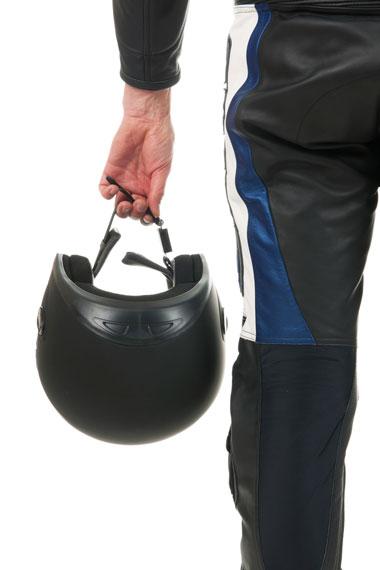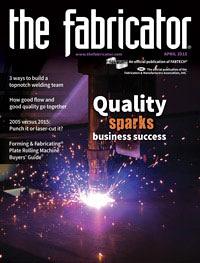Senior Editor
- FMA
- The Fabricator
- FABTECH
- Canadian Metalworking
Categories
- Additive Manufacturing
- Aluminum Welding
- Arc Welding
- Assembly and Joining
- Automation and Robotics
- Bending and Forming
- Consumables
- Cutting and Weld Prep
- Electric Vehicles
- En Español
- Finishing
- Hydroforming
- Laser Cutting
- Laser Welding
- Machining
- Manufacturing Software
- Materials Handling
- Metals/Materials
- Oxyfuel Cutting
- Plasma Cutting
- Power Tools
- Punching and Other Holemaking
- Roll Forming
- Safety
- Sawing
- Shearing
- Shop Management
- Testing and Measuring
- Tube and Pipe Fabrication
- Tube and Pipe Production
- Waterjet Cutting
Industry Directory
Webcasts
Podcasts
FAB 40
Advertise
Subscribe
Account Login
Search
You can’t commoditize human connections
Former Harley-Davidson communication strategist delves deep into the emotional economy
- By Tim Heston
- April 30, 2015
- Article
- Shop Management
Ken Schmidt knows how to get an audience thinking. As a keynote speaker at The FABRICATOR’s Leadership Summit, held Feb. 25-27 in Kissimmee, Fla., the former director of communication strategy for Harley-Davidson told how the iconic motorcycle brand lost its way. It produced mediocre motorcycles and sold them at a high price—not a good combination. So it buckled down, perfected manufacturing, and showed its new and improved product to the world. Alas, the world didn’t notice because competitors also improved their quality, but sold their products at a lower price.
Schmidt isn’t a rationalist. If he were, Harley wouldn’t be the successful company it is today. He believes (along with a good many economists these days) that people don’t act on rationality; they act on emotion. People don’t buy a Harley because it has a certain acceleration or any other gearhead spec; they buy the Harley experience, complete with inviting dealerships that sell plenty of shiny, customizable accessories, all of which happen to be big moneymakers, having much wider margins than the bike itself.
The company treats customers not as customers but as people, those who choose to buy a Harley to experience a Harley, and often to be part of a community of people who feel the same way. They buy a Harley to connect and get noticed, two basic human needs. Schmidt boiled it down to something primal: “Look at me!”
An investor who attended an annual Harley bike rally—a massive gathering where several hundred thousand turn the small town of Sturgis, S.D., into another world for a week—even called these people “disciples” in some of his reports. That was fine with Schmidt, as long as the investor didn’t use “customers,” a hackneyed, lifeless word that he felt shouldn’t have anything to do with something so human.
But wait. Before the company touted the “Harley experience,” didn’t these people buy on the basis of rationality? Didn’t they view and compare specs and prices, then move forward with the logical choice? More than that, does this thinking apply only to emotionally charged products? After all, a flat-screen television isn’t like the reflective chrome and primal roar of a recently purchased (and of course modified) hog.
Schmidt turned this argument on its head and compared the old way of buying a Harley with the new way of buying a television. The act has a rational facade, but underneath the emotion takes control. You arrive at the electronics store, where you’re greeted with a wall of TVs, many even playing the same program. All look the same, except for the small brand logo on the bottom.
The TV speakers sound all at once, giving an eerie, uncomfortable, drone-like quality to even the most dynamic sounds. You’re brought to a standstill and fold your hands in front of you, an act Schmidt called the “universal signal” that you’re overwhelmed and are separating yourself from the cacophony of stimuli. You’re in a cocoon.
Once you emerge, you move to the size of TV you need, then notice the price tags and the small, nearly identical spec sheets attached to each. From there you start your mental check list: Prices are nearly all the same, and I recognize all the brands. Check. What are the specs? Refresh rate? Check. Resolution? Check.
After you delve into the details, small price variances start to mean a lot more to you, and you may even spend serious time thinking about it. If you were completely rational, your time would be more valuable than the price difference, so you’d simply pick the TV that looked good enough and move on with your life.
This experience may be different from visiting the dingy, bare-bones Harley dealerships of decades ago, but people experience the same emotion. They have no connection with the product, so they trudge forward. Like at Walmart or on Amazon, they “click buy” to endure yet another (as Schmidt put it) “faceless, lifeless transaction.” It’s not about rationality and logic. It’s about emotion and, in these cases, the pain of enduring another boring economic transaction in the mind-numbing anonymity of modern digital life. Nothing can be quite as lonely as a life lived through Facebook. To Schmidt, the term “social media” oozes irony.
“There isn’t anything you can make these days that hasn’t been commoditized,” he said.
OK, so Schmidt isn’t the most positive person, but he’s certainly relatable. In metal fabrication, commoditization always seems to be knocking on the door, especially when purchasers are rewarded for buying on price alone. Fabricators are enduring significant pricing pressures, and the very nature of the competitive bid treats products as a commodity: Bids are submitted, and the purchaser chooses the best price. Click—transaction done.
Only unlike TVs, the transaction isn’t done. Quality isn’t yet a given in this business, if you consider “quality” as both the quality of the product and the quality of delivery. Modern fabricators can cut, form, and weld metal to tolerances that were unthinkable a generation ago. According to FMA’s “2014 Financial Ratios & Operational Benchmarking Survey,” both internal scrap and rework, as well as customer returns, accounted for less than 2 percent of sales, on average. Yet on-time delivery ranges between 80 and 90 percent.
If the purchasing agent buys on price alone, he or she may find that production delays and other complications will rear their ugly heads. Overall costs end up being higher, not only in dollar and cents terms, but emotionally as well. It’s not a good day for a plant manager when he finds he doesn’t have the parts he needs. So the customer returns to the better fabricator with a slightly higher price.
When fabricators sell their services to an OEM, they’re not selling products. Like Harley, they’re selling the experience—not of a bike rally, but of the uneventful workday, of less stress, of accomplishment. Schmidt said that, deep inside, Harley owners scream “Look at me!” Fabricator customers say (though maybe not scream) the same thing: “Look at me—look at my good decision; look how smoothly our production is running.”
Schmidt’s story of commoditization, both of hogs and TVs, may be a harbinger. What if quality of the product and quality of delivery both become givens? It goes back to connecting with people. Harley connects with its disciples in ways that have become legendary. Fabricators connect with customers (sorry, the people who buy their services) by proving their reliability and making their jobs easier and, ultimately, their lives better.
That connection between those who like and respect one another is at the very core of long-lasting business relationships in metal fabrication and, as Schmidt would say, every human relationship, period. Every person is different, which means a particular connection can’t be replicated. If it can’t be replicated, it by definition cannot become a commodity.
The next FABRICATOR’s Leadership Summit will be at the Paradise Point Resort & Spa, San Diego, Feb. 25-26, 2016. For more information, visit www.fma net.org/annualmeeting.
About the Author

Tim Heston
2135 Point Blvd
Elgin, IL 60123
815-381-1314
Tim Heston, The Fabricator's senior editor, has covered the metal fabrication industry since 1998, starting his career at the American Welding Society's Welding Journal. Since then he has covered the full range of metal fabrication processes, from stamping, bending, and cutting to grinding and polishing. He joined The Fabricator's staff in October 2007.
Related Companies
subscribe now

The Fabricator is North America's leading magazine for the metal forming and fabricating industry. The magazine delivers the news, technical articles, and case histories that enable fabricators to do their jobs more efficiently. The Fabricator has served the industry since 1970.
start your free subscription- Stay connected from anywhere

Easily access valuable industry resources now with full access to the digital edition of The Fabricator.

Easily access valuable industry resources now with full access to the digital edition of The Welder.

Easily access valuable industry resources now with full access to the digital edition of The Tube and Pipe Journal.
- Podcasting
- Podcast:
- The Fabricator Podcast
- Published:
- 04/16/2024
- Running Time:
- 63:29
In this episode of The Fabricator Podcast, Caleb Chamberlain, co-founder and CEO of OSH Cut, discusses his company’s...
- Industry Events
16th Annual Safety Conference
- April 30 - May 1, 2024
- Elgin,
Pipe and Tube Conference
- May 21 - 22, 2024
- Omaha, NE
World-Class Roll Forming Workshop
- June 5 - 6, 2024
- Louisville, KY
Advanced Laser Application Workshop
- June 25 - 27, 2024
- Novi, MI
































